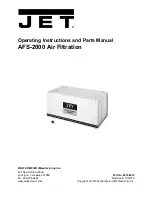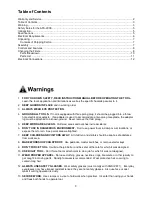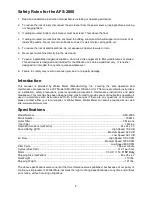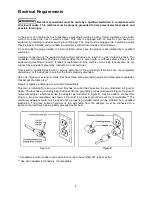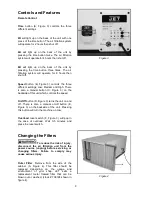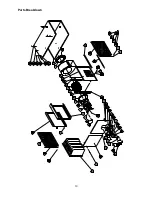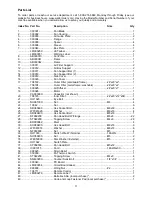
6
Electrical Requirements
Electrical connections must be made by a qualified electrician in compliance with
all relevant codes. This machine must be properly grounded to help prevent electrical shock and
possible fatal injury.
In the event of a malfunction or breakdown, grounding provides a path of least resistance for electric
current to reduce the risk of electric shock. This tool is equipped with an electric cord having an
equipment-grounding conductor and a grounding plug. The plug must be plugged into a matching outlet
that is properly installed and grounded in accordance with all local codes and ordinances.
Do not modify the plug provided. If it will not fit the outlet, have the proper outlet installed by a qualified
electrician.
Improper connection of the equipment-grounding conductor can result in a risk of electric shock. The
conductor, with insulation having an outer surface that is green with or without yellow stripes, is the
equipment-grounding conductor. If repair or replacement of the electric cord or plug is necessary, do not
connect the equipment-grounding conductor to a live terminal.
Check with a qualified electrician or service personnel if the grounding instructions are not completely
understood, or if in doubt as to whether the tool is properly grounded.
Use only three wire extension cords that have three-prong grounding plugs and three-pole receptacles
that accept the tool’s plug.*
Repair or replace a damaged or worn cord immediately.
This tool is intended for use on a circuit that has an outlet that looks like the one illustrated in Figure A
below. The tool has a grounding plug that looks like the grounding plug as illustrated in Figure A below. A
temporary adapter, which looks like the adapter as illustrated in Figure B, may be used to connect this
plug to a two-pole receptacle, as shown in Figure B if a properly grounded outlet is not available.** The
temporary adapter should only be used until a properly grounded outlet can be installed by a qualified
electrician. The green colored rigid ear or tab, extending from the adapter, must be connected to a
permanent ground such as a properly grounded outlet box.
Figure
A Figure
B
* Canadian electrical codes require extension cords to be certified SJT type or better.
** Use of an adapter in Canada is not acceptable.
Summary of Contents for AFS-2000
Page 10: ...10 Parts Breakdown ...

